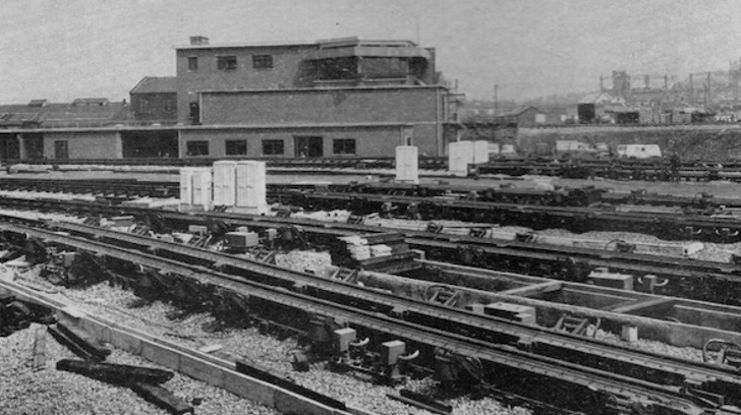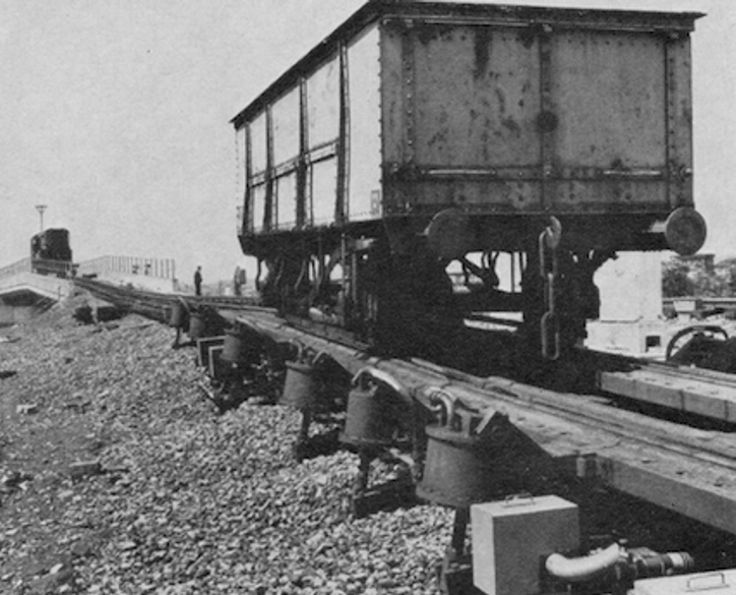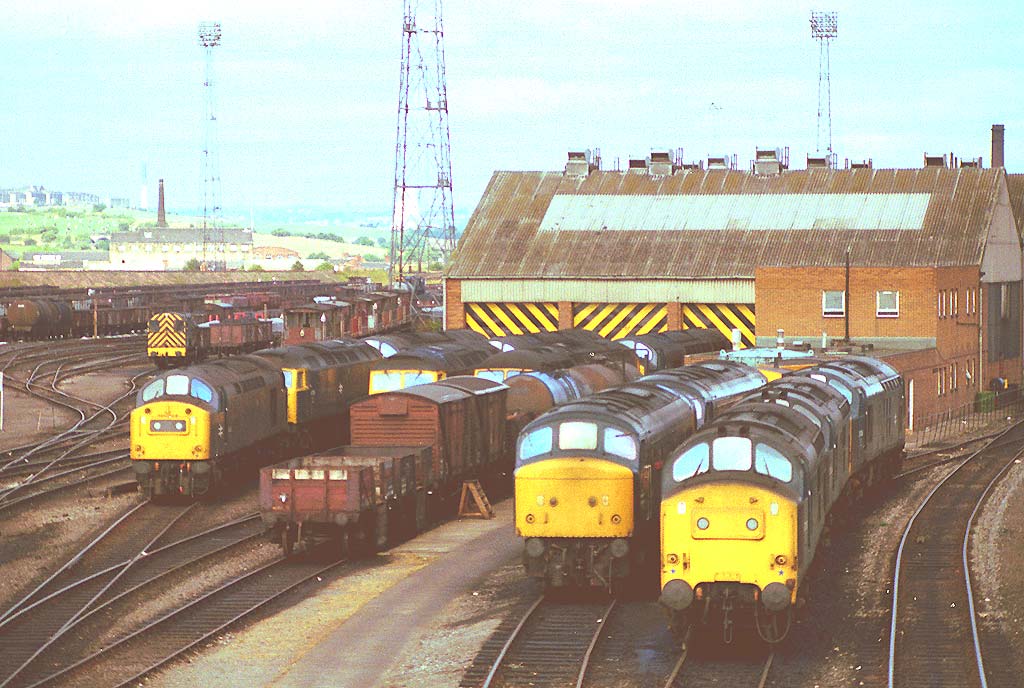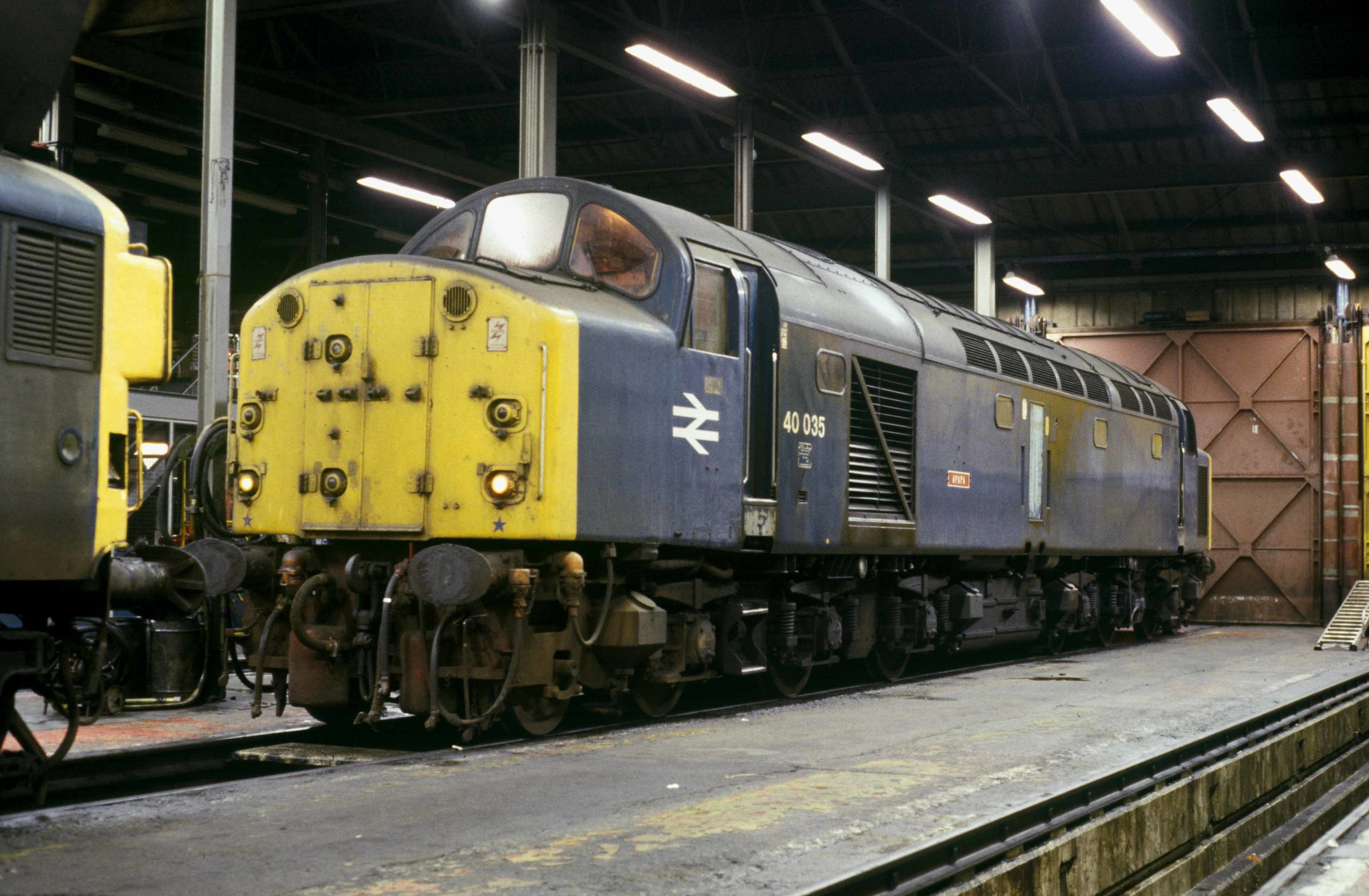Construction on the yard started in 1959 and was completed four years later. Permission was sought from the National Coal Board to build the yard as it was built upon a profitable coal seam. The last coal was worked out in 1961 and stabilisation works were undertaken to enable the yard to be constructed.
It was officially opened to traffic on 23 July 1963 by Lord Robens, who was chairman of the National Coal Board at the time. The yard had been conceived in the mid-1950s as part of the British Transport Commission's Modernisation Plan, which sought to rejuvenate the railways. Healey Mills was one of many hump yards being built, for whose traffic was planned in the 1950s, but by the time they were commissioned, lorries and fast motorways were eating into their ability to operate cost-effectively.

Well into the 1970s, the traffic at Healey Mills was in excess of the 4,000 wagons per week that it was designed for; in one study week in 1966, over 16,500 wagons were sorted in the yard.
Its location on an east/west axis meant that it was ideally positioned for the coal trains destined for either Lancashire, or the east coast ports of Hull, Immingham and Goole.
The new yard cost £3.75 million in 1963 (equivalent to £55 million in 2013), covered over 140 acres (57 ha) and stretched for 1.5 miles (2.4 km) alongside the railway and the River Calder.
The hump was installed at the west end of the yard so that traffic from the Yorkshire pits could be marshalled via a reversal over it, and then staged for delivery to either the east coast ports or Lancashire.
It contained 120 sidings (covering 57 miles (92 km) of track), fourteen reception sidings over a semi-automated hump that led to 50 sorting sidings, and then a secondary yard with 25 sidings.

The yard also had thirteen departure roads as well as fifteen staging sidings for block (trainload freight) trains. Healey Mills, which was situated between Mirfield and Wakefield Kirkgate replaced several smaller yards in the Dewsbury/Wakefield area (namely Brighouse, Crofton Laden, Horbury Junction Sidings, Low Moor, Mirfield, Mytholmroyd, New Withams, Turners Lane and Wakefield Exchange). Three other yards, Copley Hill, Crofton Empty and Hillhouse, worked in a smaller capacity than before as some of their traffic was transferred to Healey Mills.
When British Rail launched Speedlink (their air-braked wagonload network) in 1975, Healey Mills was one of twelve yards across the network where traffic could be swapped and interchanged.
When British Rail launched Speedlink (their air-braked wagonload network) in 1975, Healey Mills was one of twelve yards across the network where traffic could be swapped and interchanged. However, Speedlink was withdrawn from Healey Mills just ten years later in 1985.
The hump was closed in 1984 when average loads over it were 100 wagons per day, well below the 4,000 it was designed for. Much of the coal traffic that went through, or passed by the yard, was marshalled into merry-go-round (MGR) trains and so did not need shunting or marshalling.

Coupled with this, the closure of Yorkshire coal mines in the 1980s meant that the traffic through the yard had dwindled.
By 1985, the yard could not be accessed directly from the west; the hump and reception sidings were closed and lifted. Traffic arriving from the Calder Valley or Standedge lines, would need to reverse in the departure sidings on the east end side of the yard.
Allocation of locomotives at Healey Mills numbered 77 by 1982 and composed of classes 03, 08, 37, 40, 47 and class 56, though the class 56 locomotives were only allocated to the depot for two years.
Under TOPS, the depot code was HM.
Due to the loss of traffic and the closure of the hump yard, the depot was downgraded from a traction maintenance depot (TMD) into a traction servicing depot.
It lost its allocation of mainline locomotives, which were shared between Gateshead, Immingham, March, Stratford, Tinsley and Thornaby, and its shunters were sent to Leeds Holbeck.

After the marshalling yard closed in 1987, the site was used for storage of trains and locomotives. After the privatisation of British Rail the site was operated by EWS; an assessment was made of a future requirement of six long doubled ended sidings and further short single ended sidings.
In 1993, Trainload Petroleum reopened the depot at Healey Mills, though this was short-lived, and was only used for fuelling and minor maintenance of locomotives.
However, it saw a small resurgence when the pre-privatised freight companies launched a wagonload service in the early 1990s.
It lost its marshalling responsibilities again in May 1998, when Doncaster Belmont yard superseded Healey Mills as the gathering point and hub for Yorkshire. Doncaster Belmont's position on the East Coast Main Line meant that it was geographically and strategically better placed to handle the wagonload traffic (now branded as Enterprise under EWS ownership).
The signing on point for traincrew was closed in February 2012 when it was transferred to some portacabins near to Wakefield Kirkgate railway station.
The depot buildings were demolished in 2016 and most of the track has been removed.
In February 2017 redundant carriages and track were used in a crash exercise using railway staff and the emergency services.
Source: Wikipedia